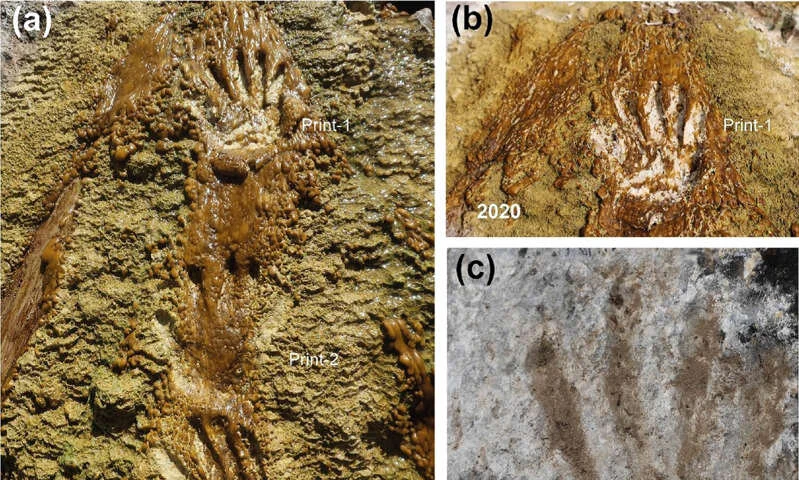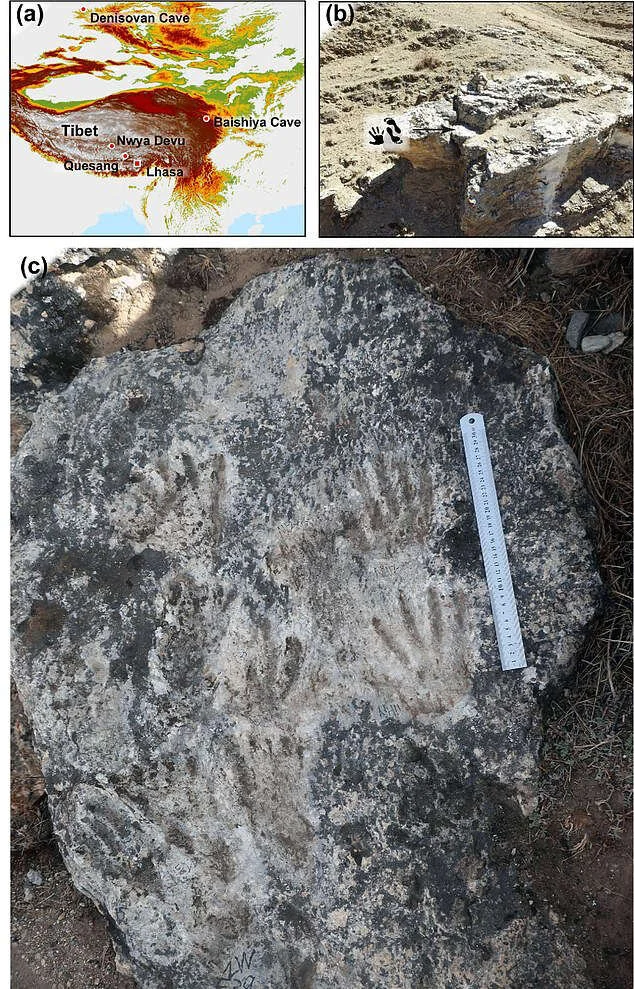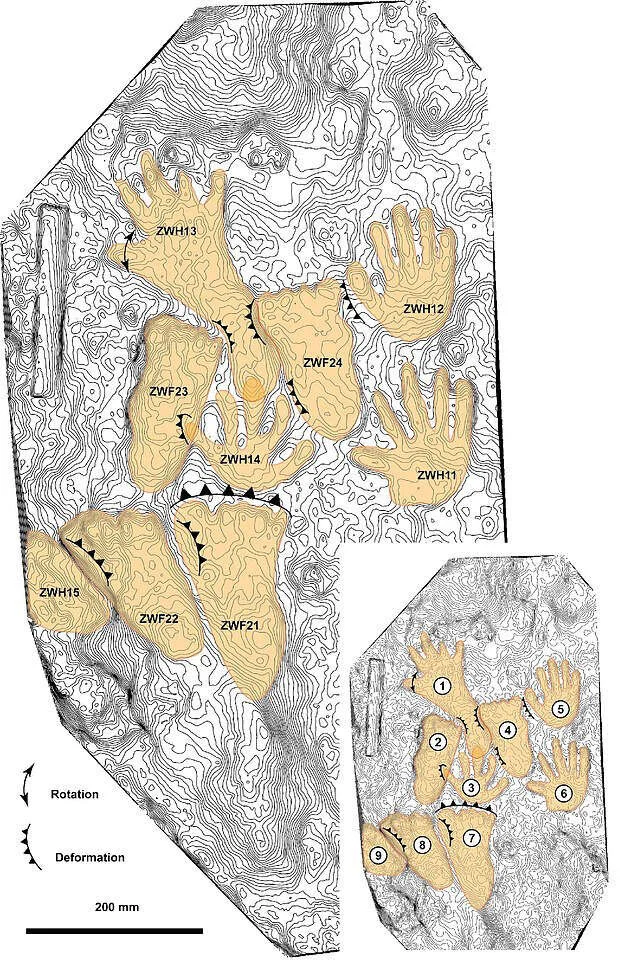Are 226,000-year-old handprints oldest art... or just child's play?
The world’s oldest known piece of art has been discovered – hand and footprints made by children around 226,000 years ago.
Researchers said the prints, which were found in Tibet, were deliberately formed in a pattern.
But others are sceptical and view them as accidental.
However, if they are seen as art, the prints are more than 100,000 years older than the earliest cave paintings found in Indonesia.
It is believed that the five handprints and five footprints were left by Denisovans – a distant relative of modern man – on a rocky promontory at Quesang on the Tibetan Plateau.
They were created by a child aged seven and a 12-year-old, analysis suggests. They were pressed into soft limestone that later hardened some 169,000 to 226,000 years ago.
The research, published in Science Bulletin, was led by a team from institutions such as Cornell and Bournemouth University.
Research scientist in the College of Arts and Sciences at Cornell, Thomas Urban, said: ‘The prints date back to the middle of the Pleistocene era, so date from between 169,000 and 226,000 years ago.
‘It would have been a slippery, sloped surface. You wouldn’t really run across it, somebody didn’t fall like that, so why create this arrangement of prints?
‘They’re clearly not accidentally placed and there’s not a utilitarian explanation for these. So, what are they?
‘The question is: What does this mean? How do we interpret these prints?
‘My angle was, can we think of these as an artistic behaviour, a creative behaviour, something distinctly human. The interesting side of this is that it’s so early.’
He added: ‘These young kids saw this medium and intentionally altered it.
‘We can only speculate beyond that. This could be a kind of performance, a live show, like, somebody says, “Hey look at me, I’ve made my handprints over these footprints”.’
He added: ‘I think we can make a solid case that this is not utilitarian behaviour. There’s something playful, creative, possibly symbolic about this.
‘This gets at a very fundamental question of what it actually means to be human.’
While footprints are common in the human record, handprints are much rarer. The fact they are there could be linked to what is called parietal art, which is immobile and typified by hand stenciling on cave walls.
Uranium series dating was used to date the art-panel, raising the question of who made them. The ages of the children was hypothesised from the size of the prints.
Lead author David Zhang of Guangzhou University said: ‘The placement of the prints is not as they would naturally occur, with tracks spaced by movement or hands placed to stabilise.
‘Rather, the artist has taken a form that was already known through lived experience (i.e., the artist presumably having seen their own footprints), and took that form (the footprint) and reproduced it in a context and pattern in which it would not normally appear.
‘This is made even clearer by the addition of the handprints, which are not commonly seen in lived experience.
‘Two children playing in the mud and intentionally creating a set of tessellated prints during an idle moment is what we probably have at Quesang and falls under most of the definitions of art.
‘After all, most parents would describe their children’s tentative artistic endeavours as art and proudly display them.
‘We therefore conclude that the composition of hand and foot traces described here constitutes “art” under a range of definitions, although given the range of possible definitions some might disagree.’
Are 226,000-year-old handprints oldest art... or just child's play? (msn.com)






